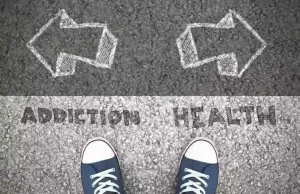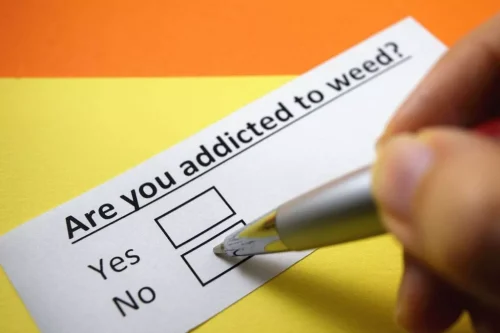
Doping has been used to extend athletic careers, as compensation for professional athletes has soared over the past few decades. The core tenets of doping are well articulated by WADA, the World Anti-Doping Agency, the leading global ant-doping agency. These include (1) safety and well-being of the athlete, (2) fair competition and (3) integrity of sport. Alcohol, nicotine, cannabis, stimulants and prescription opioids are the most commonly used substances among elite athletes but overall consumption is lower in professional sports than in the general public [2]. Use of stimulants, prescription opioids and smokeless tobacco products has a higher prevalence in this subset of the population and use of steroids and alcohol along with smokeless tobacco was more commonly used in collegiate athletes compared to their non-athlete counterparts [3,4,5].
- Some athletes who were found to have used modafinil protested as the drug was not on the prohibited list at the time of their offence, however, the World Anti-Doping Agency (WADA) maintains it is a substance related to those already banned, so the decisions stand.
- Involvement in athletics appears to be inversely related to cigarette smoking and illicit drug use [13,14].
- Since then, there have been numerous further allegations of doping in athletics.
- No established cutoffs exist to interpret MINORS scores, but scores closer to the maximum are preferable.
- A number of studies have shown that environmental interventions can be efficacious at impacting the target behavior (see Middleton et al., 2010; Task Force on Community Preventive Services, 2010; Toomey et al., 2007), but they can also pose unique challenges.
- The increasing legalization of Cannabis sativa plant products has sparked growing interest in their therapeutic applications.
Treatment of affected athletes, including counseling and psychiatric support
“I don’t know why people use drugs, but, of course, the pressure [on Don] might have had something to do with it,” his fiancee, Leslie Nelson, told the Los Angeles Times. Athletes obtain addictive substances from medical and nonmedical sources. In 2011, boxing legend Oscar De La Hoya told Univision how depression led to his addictions to cocaine and alcohol. He had thoughts of suicide before entering a rehab facility earlier that year. Football player Erik Ainge took prescription painkillers for a broken finger in college, which gave way to an addiction that continued for years.
Article contents
One other promising avenue for potential future treatment may involve the use of ketamine for substance use issues in athletes. Ketamine is an anesthetic drug that has been demonstrated to be effective in the treatment of pain. It was discovered to have antidepressant properties at low doses since an initial study in 2000 demonstrating positive results with a single infusion that has been expounded upon by several RCTs since that time showing sustained antidepressant effects with repeat dosing [95,96,97]. Ketamine is an NMDA receptor antagonist but its true mechanism of action has still not been completely elucidated. Recent studies suggest it amplifies targeting of rapamycin (mTOR) signaling as well as increasing brain derived neutrophic factor (BDNF) which promotes neuronal survival among other possible functions [98].

Why Athletes Are at Risk for Substance Misuse
Nonsteroidal anti-inflammatory agents are widely utilized12 in sports and are reasonably safe if used properly. Nevertheless, the potential gastric and renal complications are well-known. “There is a zero tolerance to the abuse of doping in my sport and I will maintain that to the very highest level of vigilance,” he said.
Yet, despite the pervasiveness of the term, it is not always clear what clean sport really is. American Addiction Centers (AAC) is committed to delivering original, truthful, accurate, unbiased, and medically current information. We strive to create content that is clear, concise, and easy to understand. Previously there was no testing between 11pm and 6am, drug abuse in sports providing a potential window of opportunity for micro-dosing products, such as EPO, without being caught. Johnson had won the 100m in a world record of 9.79 seconds but was stripped of his gold medal, external after the positive test and sent home in disgrace. One method introduced to aid the detection of such transfusions is the biological passport.

When not working for Gaudenzia, Higgins is also a major in the New Jersey Army National Guard, his profile on the professional social media site says. To aid Emergency Departments (ED) in increasing knowledge on topics such as harm reduction, buprenorphine initiation, linkage to care, and stigma, the Department’s PA-SUN program created (no-cost) online educational modules for ED providers. No planners, members of the planning committee, content reviewers and/or anyone else in a position to control the content of this education activity have relevant financial relationships to disclose. Learn how to determine whether a patient should be referred to substance use disorder treatment and how to conduct a “warm handoff” of that patient to specialty treatment. Cannabidiol has also been removed from the prohibited list, unless it contains THC (Tetrahydrocannabinol). A synthetic actoprotector, Bemitil has been added to the WADA monitoring list in and out-of-competition, while hydrocodone will be monitored in-competition.
History of doping in athletes
- Other online programs have found that providing web-based feedback or online modules in college athletes could lead to significant reductions in drinking, as well as improvement in assessment of social norms related to drinking [42,43].
- Currently, there are limited data to support the potential benefits in alcohol, cocaine and opioid use disorders.
- In the context of the 64th session of the Commission on Narcotic Drugs, international experts gathered virtually during a side event to discuss what the evidence says about the role of sport in supporting youth to prevent drug use and address related risk and protective factors.
- WADA is the international independent agency that publishes the World Anti-Doping Code, which is the document harmonizing anti-doping policies in all sports and all countries.61 The Code was first adopted in 2003 and became effective in 2004.
- A goal in the treatment of athletes would be to find either new medications without side effects such as sedation, weight gain or cardiac effects or non-medication options including neuromodulation techniques discussed above that can provide benefit without any daily side effects.
- Out of the present studies, very few have explored therapeutic techniques in athletes.
However, significant research on high school and college athletes shows the problem is widespread. This list is only a partial look at the potential side effects that can accompany the use of anabolic steroids. As with most chemicals, even those based on natural sources, these PEDs affect each user differently. In severe cases, these PEDs can impact every system in the body, causing everything from thyroid disorders to a blood disorder called testosterone-induced polycythemia. This ailment causes the blood to become thicker and can create clots that could threaten the athlete’s life. Athletes of all ages feel the drive to succeed with pressure from both internal and external sources.
Sports pharmacology includes study of the various aspects of the drug use and abuse in sports and treatment of sports-related injuries. Focusing on sports pharmacology in the medical curriculum can help the upcoming health-care professionals to support the sportspersons to improve the quality of their life by using various drugs and other substances https://ecosoberhouse.com/ within the standardized limits and avoid embarrassment of doping. The increasing legalization of Cannabis sativa plant products has sparked growing interest in their therapeutic applications. Prohibition laws established in 1937 hindered formal research on cannabis, a plant with cultural and medicinal roots dating back to 2700 BC in Chinese history.
- An athlete who injures their shoulder, tears their ACL or breaks their leg receives opioid medications for use after surgery, and it does help the pain — but only at first.
- Athletes can become dependent on PEDs like steroids just as they can on any other drug, displaying an inability to stop using them and experiencing withdrawal symptoms once their use of the drug stops.
- Football player Erik Ainge took prescription painkillers for a broken finger in college, which gave way to an addiction that continued for years.
- Athletes at the Olympic Games are tested for EPO through blood and urine tests.
- Health-care professionals need to be careful while prescribing medicines to sportspersons.
- Although anxiety disorders are highly treatable, they may tempt athletes to self-medicate with depressants such as alcohol or benzodiazepines like Xanax®.

The most recent study looking at smokers not looking to quit were treated with tDCS which cut their cravings by 50% but intake remained the same [77]. Athletic drug abuse deserves treatment in a program that respects people’s individual needs and works to find the most effective evidence-based methods for each person. Gateway has been providing lifesaving addiction medicine to people of all backgrounds for more than 50 years. With over a million patients treated, we have built up expertise to handle addictions of all types with compassion and efficacy. Student-athletes who must balance strenuous practices and competitions with academics are particularly vulnerable to mental health issues that can lead to or worsen addiction.

